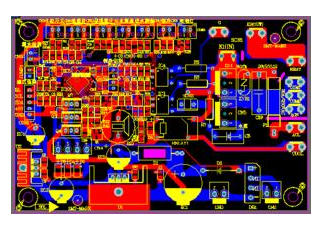The engineer has thought of all the ways that the system may fail, and once a failure occurs, they are ready to repair it. Avoiding failures is more important in PCB design. Replacing a circuit board that is damaged in the field can be expensive, and customer dissatisfaction is usually more expensive. This is an important reason to keep in mind the three main reasons for PCB damage in the design process: manufacturing defects, environmental factors and insufficient design.
Although some of these factors may be out of control, many factors can be mitigated during the design phase. This is why planning for a bad situation during the design process can help the board to perform to a certain extent.
1 manufacturing defects

One of the common causes of damage to the PCB design board is due to manufacturing defects. These defects can be difficult to find, and even more difficult to repair once discovered. Although some of them can be designed, others must be repaired by a contract manufacturer (CM).
This is not an exhaustive list, but it gives the designer a good idea of what can be expected when manufacturing defects. As you can see, you can resolve the listed issues during the design process and/or work closely with CM to foresee issues that may cause the operation to fail.
2 Environmental factors
Another common cause of PCB design failure is the operating environment. Therefore, it is very important to design the circuit board and the chassis according to the environment in which it will operate.
Calories
Circuit boards generate heat and are often exposed to heat during operation. Consider whether the PCB design will circulate around its enclosure, be exposed to sunlight and outdoor temperatures, or absorb heat from other nearby sources. Changes in temperature can also crack the solder joints, the base material and even the housing. If your circuit is subject to high temperatures, you may need to study through-hole components, which generally conduct more heat than SMT.
dust
Dust is the bane of electronic products. Make sure that your case has the correct degree of protection (IP) and/or select components that can handle the expected dust levels in the operating area and/or use conformal coatings.
Moisture
Humidity poses a great threat to electronic equipment. If the PCB is designed to operate in a very humid environment where the temperature changes rapidly, moisture will condense from the air onto the circuit. Therefore, it is important to ensure that moisture-proof methods are incorporated throughout the circuit board structure and before installation.
Physical shock
There is a reason for sturdy electronic advertisements that people throw them on rock or concrete floors. During operation, many devices are subject to physical shock or vibration. You must choose cabinets, circuit boards and components based on mechanical performance to solve this problem.
Non-specific design
The last factor of PCB design board damage during operation is the most important: design. If the engineer’s goal is not specifically to meet its performance goals, including reliability and longevity, this is simply out of reach. If you want the circuit board to be used for a long time, make sure to select components and materials, lay out the circuit board, and verify the design according to the specific requirements of the design.
Component selection
Over time, components can fail or stop production; however, it is unacceptable for such failures to occur before the expected life of the board expires. Therefore, your choice should meet the performance requirements of its environment and have sufficient component life cycles within the expected production life cycle of the circuit board.
material selection
Just as the performance of components will fail over time, so will the performance of materials. Exposure to heat, thermal cycling, ultraviolet light, and mechanical stress can cause circuit board degradation and premature failure. Therefore, you need to choose a circuit board material with a good printing effect according to the type of circuit board. This means considering material properties and using the most inert materials that are suitable for your design.
PCBA design layout
Insufficient PCB design layout may also be the root cause of circuit board failure during operation. For example, the unique challenges that are not included in the high-voltage board; such as high-voltage arc tracking rate, may cause circuit board and system damage, and even cause injury to personnel.
Design verification
This may be the most important step in producing a reliable circuit. Perform DFM inspection with specific CM. Some CMs can maintain tighter tolerances and work with special materials, while others cannot. Before starting manufacturing, ensuring that CM can manufacture the circuit board in accordance with it will ensure that the higher quality PCB design A will not fail.